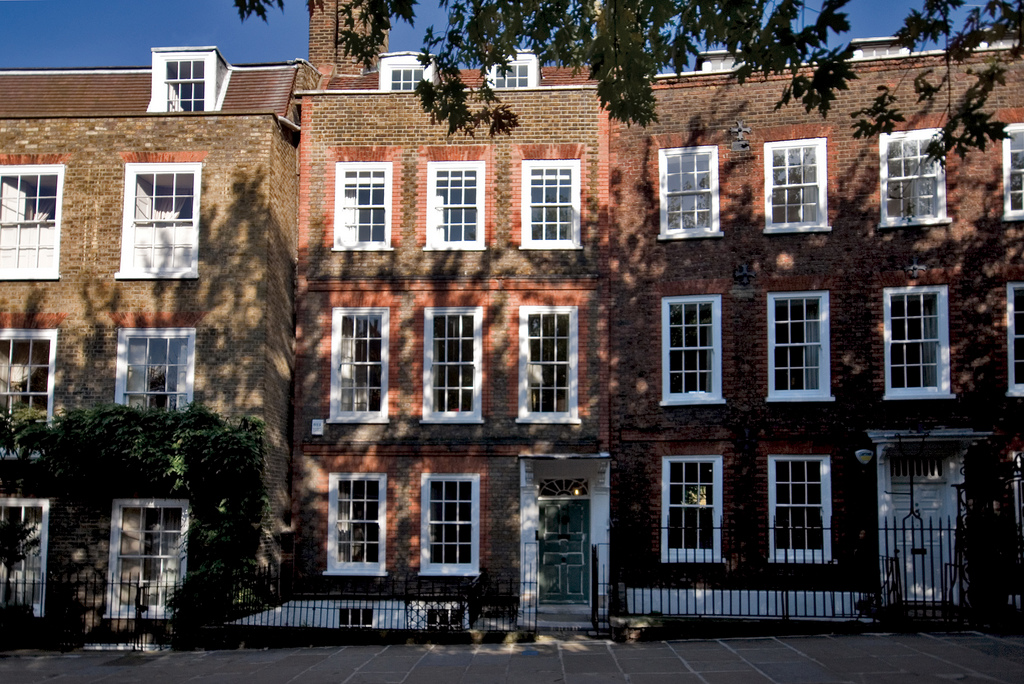
Mary Adela Lescher, [Sister Mary of St Wilfrid] (1846–1927),known as Adela in the family, was born at 17 Church Row, Hampstead. She was the second of five children of Joseph Sidney Lescher (1803–1893), and Sarah Harwood(1812 – 1856). Joseph Sidney was a partner of the wholesale chemists Evans, Lescher, and Evans. His father William Lescher (1768 – 1817), had emigrated from Alsace, France, in 1778, before the French Revolution. Family tradition holds that “Lescher of Kertzfeld” received his patent of nobility in the reign of Louis XIII, in the middle of the C17th. The Leschers were Roman Catholics. His wife, Sarah Harwood , Mary’s mother, was the daughter of a West India merchant in Bristol and a member of a staunch Baptist family, but she converted to Catholicism two years after her marriage. The eldest brother, Frank Harwood Lescher is Patrick Grehan III’s son-in-law; Adela was a year older than Wilfrid (1847–1916), who was ordained a Dominican priest in 1864. Mary’s only sister Abigail, died in 1844 at the age of five. The youngest brother was Herman (1849 – 1897) who died of flu in 1897, aged just forty-eight.
Adela was educated by governesses at home, and in France, where the family had gone for health reasons, until her mother’s death in 1856; after which she was sent to the Benedictine school at Winchester, Hampshire (later at East Bergholt in Suffolk), where she had an aunt, Caroline Lescher (1802 – 1868) known as Dame Mary Frances,O.S.B.; in a slightly curious twist another cousin of Adela’s, her first cousin Agnes, [daughter of William Joseph Lescher (1799 – 1865) and another of Caroline Lescher’s nieces was Lady Abbess at Bergholt from 1888 until 1904, and know as Dame Mary Gertrude. She attended the Dominican school at Stone for a short time. She left boarding-school in 1864 and continued her studies in languages, music, and literature at home under her brother’s former tutor.
Mary had two older cousins, Frances Lescher (Sister Mary of St Philip), who was the principal of Notre Dame Teacher Training College at Mount Pleasant, Liverpool, and Ann Lescher (Sister Mary of St Michael), who was also a sister in the Institute of Notre Dame, as well as their youngest sister Agnes (Dame Mary Gertrude). In May 1869 she entered the mother house of the Notre Dame order, dedicated “to teach the poor in the most neglected places”, at Namur, Belgium, and took the name Sister Mary of St Wilfrid. She returned to England in September 1871 as a professed sister to teach in the Notre Dame boarding-school at Clapham, London. After a bout of rheumatic fever she convalesced at Mount Pleasant and was then appointed to the college staff there to lecture in botany, English, and music. In 1886 she became mistress of the boarders, instructed the senior girls, and taught psychology. In 1892 she was appointed superior of Everton Valley Convent, Liverpool, which ran a convent day school, several elementary schools, and a pupil-teacher centre where boarders were prepared for entry into the Mount Pleasant Training College.
In April 1893 Archbishop Eyre of Glasgow invited the Sisters of Notre Dame to establish a Roman Catholic teacher training college in Scotland which would relieve female students from the need of travelling to Liverpool or London for training. A site was chosen at Dowanhill, in the west end of Glasgow, near the university, which had just opened its classes to women. The college was officially established in December 1893 with Sister Mary of St Wilfrid as its first principal, assisted by four sisters. The first female Roman Catholic teachers to receive their training in Scotland began their course of study in January 1895. Sister Mary of St Wilfrid took an active part in the training of the students and through her singleness of purpose made the venture a success.
A major achievement of Notre Dame College was the development of practical science teaching and the revolutionizing of biology teaching. A ‘practising school’, which was to include both a secondary school and the first Montessori school in Glasgow, was opened next to the college in 1897 and new schools were opened in Dumbarton (together with a convent) in 1908 and Milngavie in 1912. A staunch member of the Educational Institute of Scotland, Sister Mary of St Wilfrid encouraged all her students to join. As sister superior she was manager of the Notre Dame schools until May 1919, when Notre Dame Training College was transferred to the national scheme and came under the control of the national committee for the training of teachers. She retired as sister superior in 1919. She had been instrumental in founding a Notre Dame association for former students and the Glasgow University Catholic Women’s Association. She also set up a branch of the Scottish Needlework Guild to make garments for the poor and vestments for missions, and, after a stay in a nursing home in 1904, had set up the Association of Catholic Nurses of the Sick. Sister Mary of St Wilfrid died at Notre Dame Convent, Dowanhill, Glasgow, on 7 May 1927, and was buried on 11 May at Dalbeth cemetery.
[http://www.oxforddnb.com/view/article/48666,] with additions.